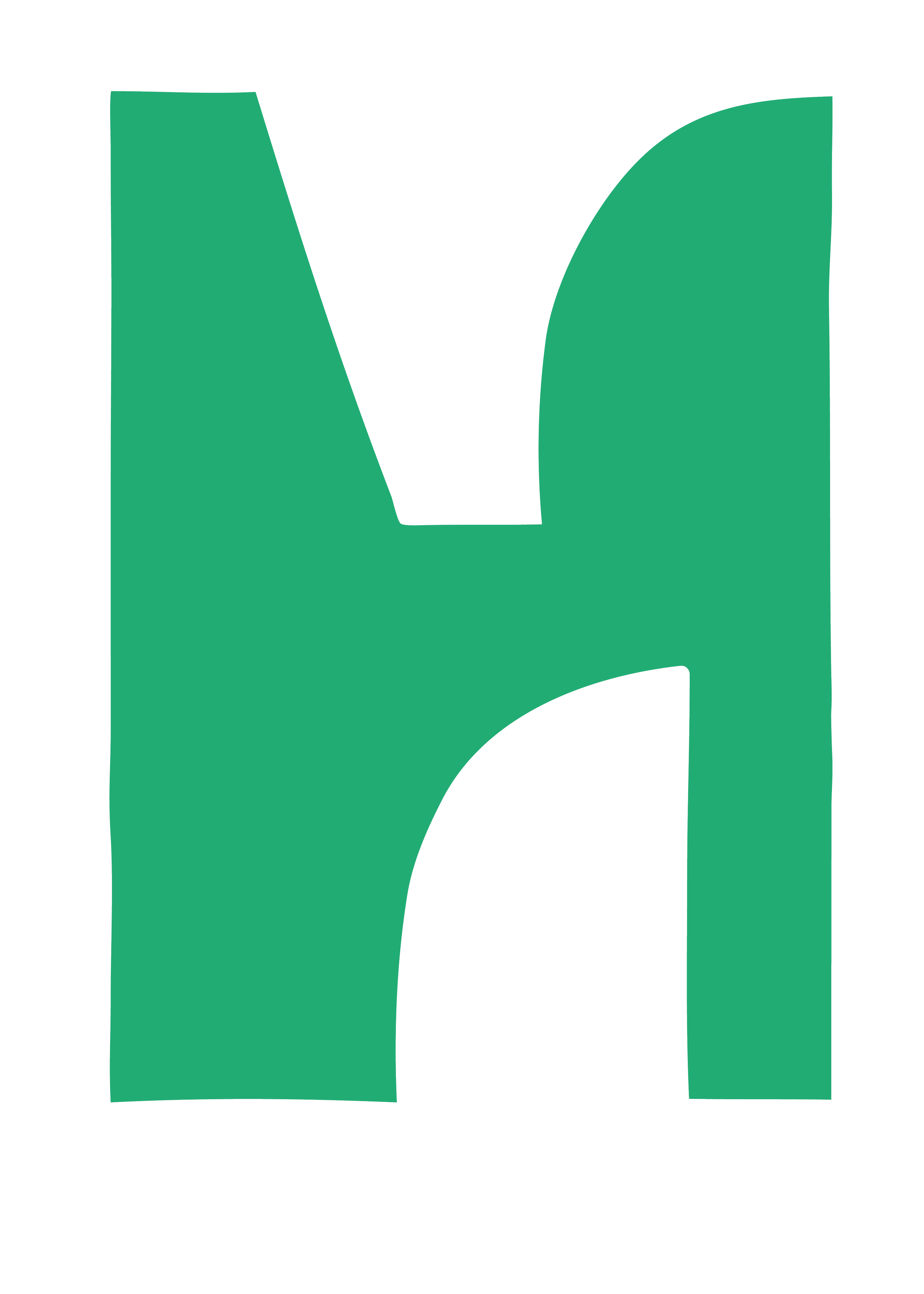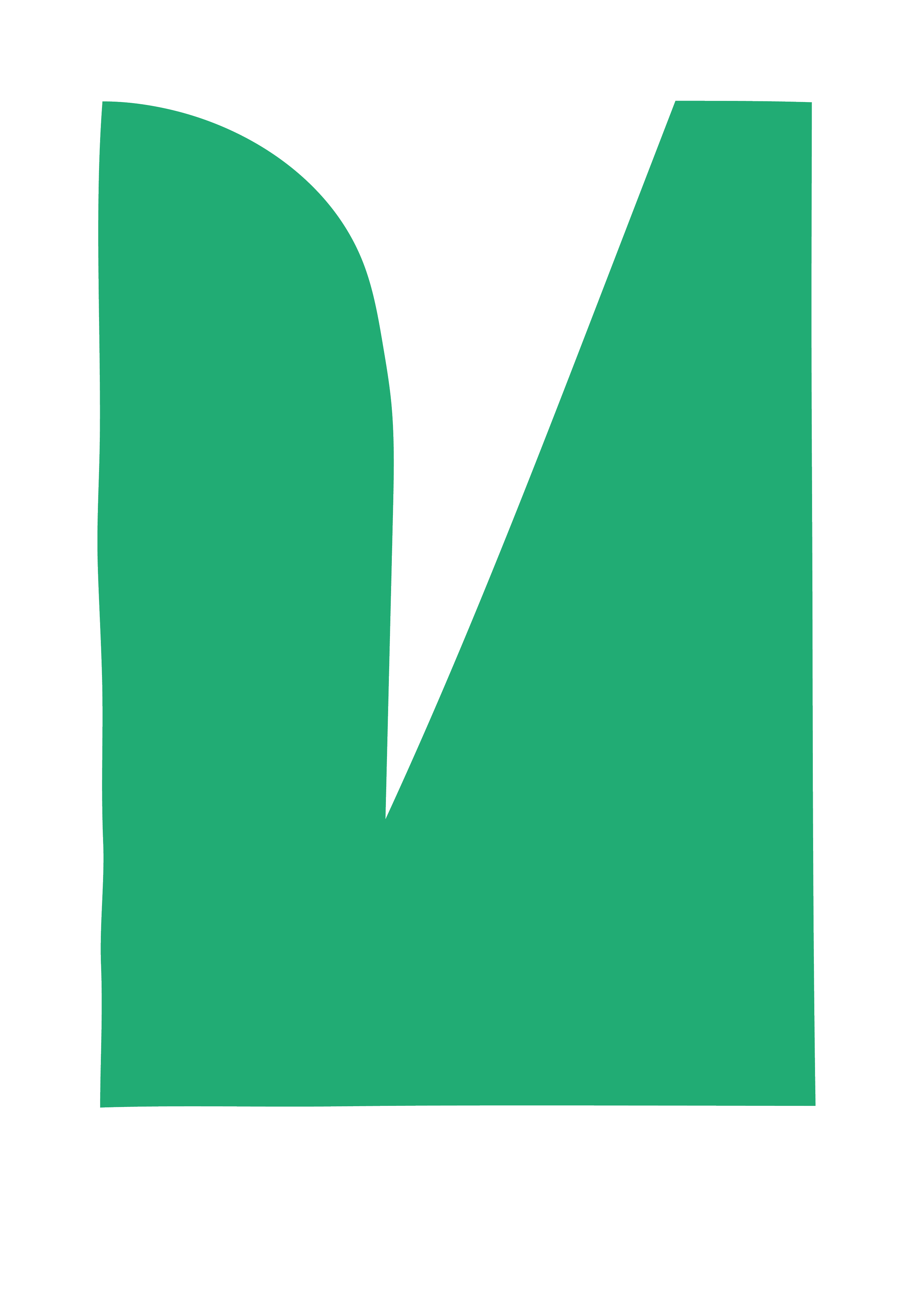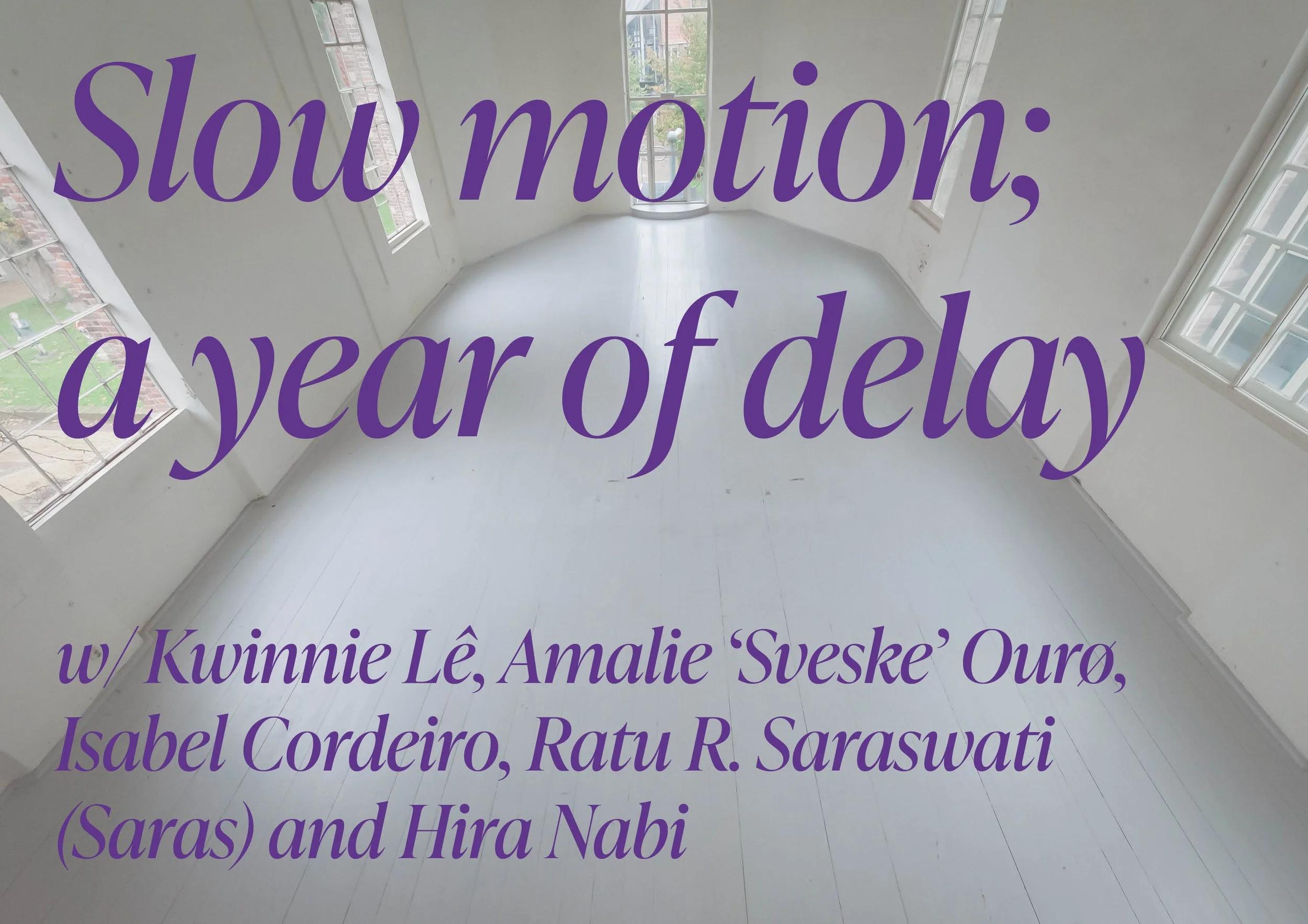*For previous year programs, please scroll down.
2025 program:
‘Whispers of resistance; a year of softness’
with Yin Yin Wong, Caleb Witvoet, Finn Anton Maätita, Ribka M. Pattinama Coleman & Jerrold Eliano Saija, Skye Maule-O’Brien & Mirjam Linschooten, and Leonie Brandner.
Hotel Maria Kapel (HMK) is proud to present the selected artists for the 2025 program Whispers of Resistance, A Year of Softness. In a time when crises and polarization are driving us further apart, HMK opts for a counter-movement: a year where softness takes center stage as a way to examine societal urgencies. The program builds on previous residencies, where themes such as slowing down, translation, and healing were explored. This year, HMK focuses on how softness can be a powerful tool in times of tension.
The artists of 2025 will each contribute to this softness through their unique perspectives and practices. Yin Yin Wong investigates the unheard stories of the (South) East Asian diaspora in the Netherlands, departing from personal experiences and the portrayal of this community. Caleb Witvoet explores the creative rebellion of graffiti and skateboarding as forms of civil disobedience in a large installation that draws parallels between the chapel's arches and the curves of a skate ramp. Finn Anton Maätita, Ribka M. Pattinama Coleman & Jerrold Eliano Saija continue their collaboration, exploring their shared connections to the Moluccan land and voices in the diaspora. Skye Maule-O’Brien & Mirjam Linschooten focus on the capitalization of wind in the Caribbean and how this colonial legacy still exerts influence today. Finally, Leonie Brandner delves into origin stories within mythological narratives and translates them into an installation that will fill the chapel.
In 2025, HMK will offer a space where softness becomes a tool to soften the harsh edges of our time. We look forward to welcoming and supporting the chosen artists as they work on their projects in our beloved chapel.
Continue reading about the individuals projects
You can keep engaging with our projects through our website and social media:
Hotel Maria Kapel is made possible with help of:

*For previous year programs, please scroll down.
2024 program:
‘Slow motion; a year of delay’
Hotel Maria Kapel is excited to enter 2024 with the year program Slow motion; a year of delay, with artists Kwinnie Lê, Amalie ‘Sveske’ Ourø, Isabel Cordeiro, Ratu R. Saraswati (Saras) and Hira Nabi.
-
At times, things move too fast to be seen clearly by the naked eye. We seem to lack a proper understanding of how they progress, grow and evolve. We then wish for it to slow down and allow us to have a closer look at its details, mechanisms and movements in order to make sense of the world we live in. Slow motion recordings used in science and broadcasting help us to see up close that decisive moments consist of a chain of reactions, thus unveiling possible ways to reflect on life’s urgencies.
This year’s artists in residence at Hotel Maria Kapel help us to look through a slow motion lens that lays bare the world around us, frame by frame. Last year we learned from Raffia Li how radical slowness is a way of shaping our world in a more inclusive way. This year we want to negotiate the connotations of delay and embrace the potential of slow motion: one which enables us to observe, act and commune in a more conscious and caring way.
Being able to slow down and reflect on urgency and adversity requires a sense of safety, not much different to the way our heart rate slows down when we take time to breathe, rest and meditate. As an art space HMK aims to provide a safe space to the many voices that inhabit the chapel, thus creating ample opportunity to take a step back, have a moment of introspection, contemplate and exchange, in order to consciously start moving, slowly, forward.
Kwinnie dives into the history of tattooing where breathing slowly is essential to inky creations made with a steady hand; Amalie ‘Sveske” Ouro invites us to observe and embrace the slow pace growing grass throughout springtime; Isabel will change our perspective and tether us literally upside down to make us aware of our bodies and the movement of time; Saras observes the city of Hoorn through the magnifying glass of her grandfather, thus revealing what usually is not registered by the naked eye; Hira has us look up to the stars to alter our perception of our time on earth when taking into consideration how the eternal stars gaze back at us and our history.
Continue reading about the individuals projects
You can keep engaging with our projects through our website and social media:
Hotel Maria Kapel is made possible with help of:
2023 program: ‘Grammar of the architecture; a year of translation’
HMK is proud to present the 2023 artists-in-residence: Gijsje Heemskerk & Bernice Nauta, Narges Mohammadi, Raffia Li, Sijben Rosa, Dito Yuwono & Mira Asriningtyas, David Camargo & Amauta García.
Kicking off in Januari, Gijsje and Bernice are using the chapel for a large-scale film set in which they will shoot their film The Plantiarchy. In Spring, Narges will create a translucent edible glass in a play of light falling in through the gothic windows. Raffia will scrutinize HMK's accessibility from their critical view of ableism. Sijben will share their vulnerability during their Queer Clay Club workshop series, exploring how queer friendly Hoorn currently is. Dito and Mira take a critical look at the construction of history in which they juxtapose local narratives from Hoorn and Indonesia. David and Amauta close the year with the question: How much time does it take the earth to make one square meter of gas?
Continue reading about the individual projects
This year's theme HMK reflects on their role as translator. Translation between different local and international communities, visual languages and topics that escape words or have been silenced. Just as the grammar conditions the possibilities of expression in a language, the surrounding architecture is also a decisive factor for the making process of an artist. Therefore we invite the following artist to start a conversation with the specific context, local communities and history and we listen with curiosity to the questions they pose.

2022 program: ‘Connective tissue’
Hotel Maria Kapel is pleased to announce the 2022 program with artists: Darya Golova, Benjamin Francis, Ana Linhares, Afra Eisma & Kubilay Mert Ural, Mangacu Collective, Niki Milioni and Vita Buivid.
Image: Pérez Bravo Collective
Which urgencies are felt in our bodies? How do we tend for gaping wounds? And how can we stitch together two sides of a cut? Over the past two years, HMK spent time learning about care (Slow Burn, 2020) and support (On Shelter, 2021) and it is continuing to do so. Earlier this year, HMK invited practitioners to raise and conceptualise their questions and urgencies during the Open Open Call, from which the 2022 year program has been formulated. With Connective tissue, HMK and its artists in residence will be carefully examining the fractures, frictions, irregularities, and connections in the social tissue of our time. Together, they contribute to possible structures for repair and healing, from which critical thought about the urgencies in our shared future can emerge.
Connective tissue, to hold our changing bodies and heal our gaping wounds. An agent for support and care, on the outside and within. Bodies, individual and communal, in a crucial moment of transition and repair.
Built as a chapel belonging to a 16th-century monastery, HMK is venturing into the specific history of its centuries-old building for the third year in a row. Connective tissue is taking inspiration from the so-called Hôtel-Dieu, monasterial hospitals, where monks and nuns treated the wounded, ill and needing – one of the seven corporal acts of mercy (misericordia). In our fractured and polarizing times, there is a dire need for mercy; of attentive listening, care and safety. The tension between the individual and communal body is stretched. The holes in the social tissue become wider and more tangible. It shows where repair is needed and what the interwoven agents are. As a society, now more than ever, we need to carefully assess our wounds and heal by creating new tissue.
How can we think with and about support, care and connection in such a multiplicity of dispositions? HMK’s 2022 program Connective tissue continues to respond to matters of urgency in the support of artistic practice.
2021 program: ‘On Shelter’
HMK is proud to announce its 2021 programme ‘On Shelter’ and the artists in residence who were chosen on the basis of a juried open call in spring 2020: Setareh Noorani & Matt Plezier (NL), Minne Kersten (NL), Danai Giannoglou (GR), Alina Lupu (RO), Ada M. Patterson (BB) and Ganesh Nepal (NP).
Image: Setareh Noorani
Since its conception, HMK’s 2021 programme has continued to gain urgency. The programme invites artists and cultural practitioners to think about where and how we can shelter and be sheltered. What do we need sheltering from and what would our (new) shelters look like? What are the politics of sheltering? Can we imagine shelters that are porous, spiritually and politically, that are in relation and exchange with different worlds? What could our worlds be? In the coming year HMK and its artists in residence will be examining notions of home and safety, motherhood and reproductive labour, climate catastrophe and transness and sleep.
Hotel Maria Kapel was built as a chapel belonging to a 16th-century monastery. For centuries, monasteries functioned as medieval ‘safe houses’ and centers for ‘intellectual progression’. They provided sanctuary, they welcomed people to study, they ran hospitals and schools – but we also have to look at monasteries as hermetic representatives of the knowledge of the elites, institutions dictating right and wrong; spaces of care, shelters, have always been double-edged.
While art may have promised us shelter, our art worlds rarely provide any. Our museums, schools, galleries – but also libraries, pools, parks, streets, buses, ocean retreats, mountains and forests, dark rooms, clothes shops and homes – all of them both shelter and threaten, pull and shape us into obedience, embrace, intimidate and reject us. Secular sanctuaries, capitalist havens, safe harbours. How can we think with and about artistic practice in such multiplicity of dispositions and fringes? Picking up and unpicking those threads, HMK’s 2021 programme On Shelter continues to respond to matters of urgency in the support of artistic practice.
New types of residencies:
With this new program HMK introduces three new types of residencies: the long-term residency, the curatorial residency and the mentorship residency. These have been developed following the learnings of HMK’s 2020 year of reflection and redirection. The long-term residency invites residents to develop a project in relation to the locality of Hoorn and its inhabitants. The mentorship residency invites one artist to be in year-long dialogue with the HMK extended team to develop their practice remotely. The curatorial residency invites a recently graduated curator from de Appel’s curatorial program to develop a summer exhibition in HMK’s chapel.
As a whole, the program aims to engage locally and provide a mix of accessible and experimental artistic projects. In 2021, HMK will house young practitioners and their projects, gradually shifting its gravity from a space of care to an institution for support. Emphasizing the internationality of communities of cultural workers in The Netherlands, HMK invited proposals from national and international practitioners that are based in The Netherlands.




